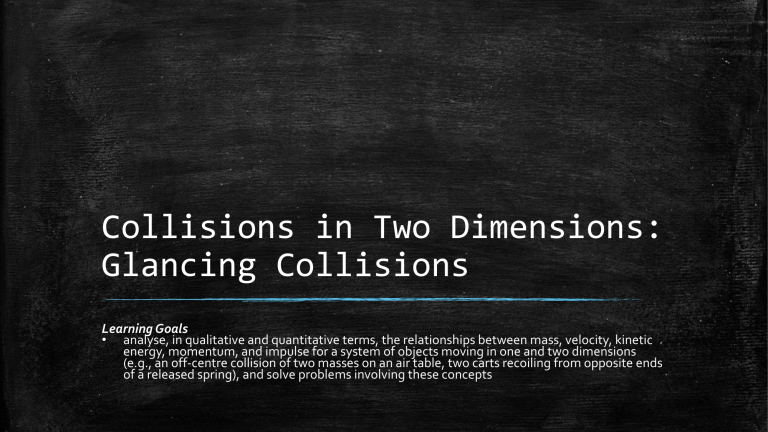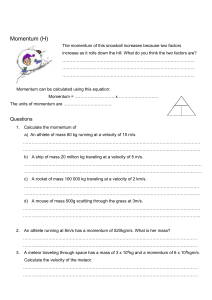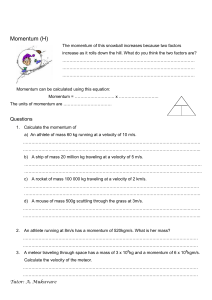
Collisions in Two Dimensions: Glancing Collisions Learning Goals • analyse, in qualitative and quantitative terms, the relationships between mass, velocity, kinetic energy, momentum, and impulse for a system of objects moving in one and two dimensions (e.g., an off-centre collision of two masses on an air table, two carts recoiling from opposite ends of a released spring), and solve problems involving these concepts Glancing collisions ▪ A glancing collision is when the impact between two objects is imperfect ▪ This means that the centers of the object are out of alignment ▪ The result of a glancing collision is the momentum exchange is at an angle to the original motion. And the objects veer off at angles ▪ Laws of conservation are still in effect ▪ However calculations will have to include x-y components Components of momentum ▪ In previous lessons when discussing changes in momentum we were only searching for one unknown, the final velocity. ▪ But in a glancing collision we now have two unknowns, the x and y components of velocity Ex 1. A large meteor of mass 1.25 x 106 kg travelling at 4.1 km/s [towards sun] suddenly detonates into 3 pieces as shown. Ex 1. A large meteor of mass 1.25 x 106 kg travelling at 4.1 km/s [towards sun] suddenly detonates into 3 pieces as shown. Fragment 1: 0.25 x 106 kg 6.5 km/s [38o up from horiz] Fragment 2: 0.31 x 106 kg 8.5 km/s [23o up from horiz] Calculate the momentum and velocity of the third piece Solution: Since the net force on the meteor is zero, the p before the explosion must equal the p after the explosion. This means that the p of all the fragments must equal the initial p of the meteor. 2.635x109 kg m/s 23o 1.625x109 kg m/s p3 38o 5.125x109 kg m/s Solving for the momentum of the third piece we get: 2.5x109 kg m/s [55o down from horizontal] 3.6 km/s [55o down from horizontal]




